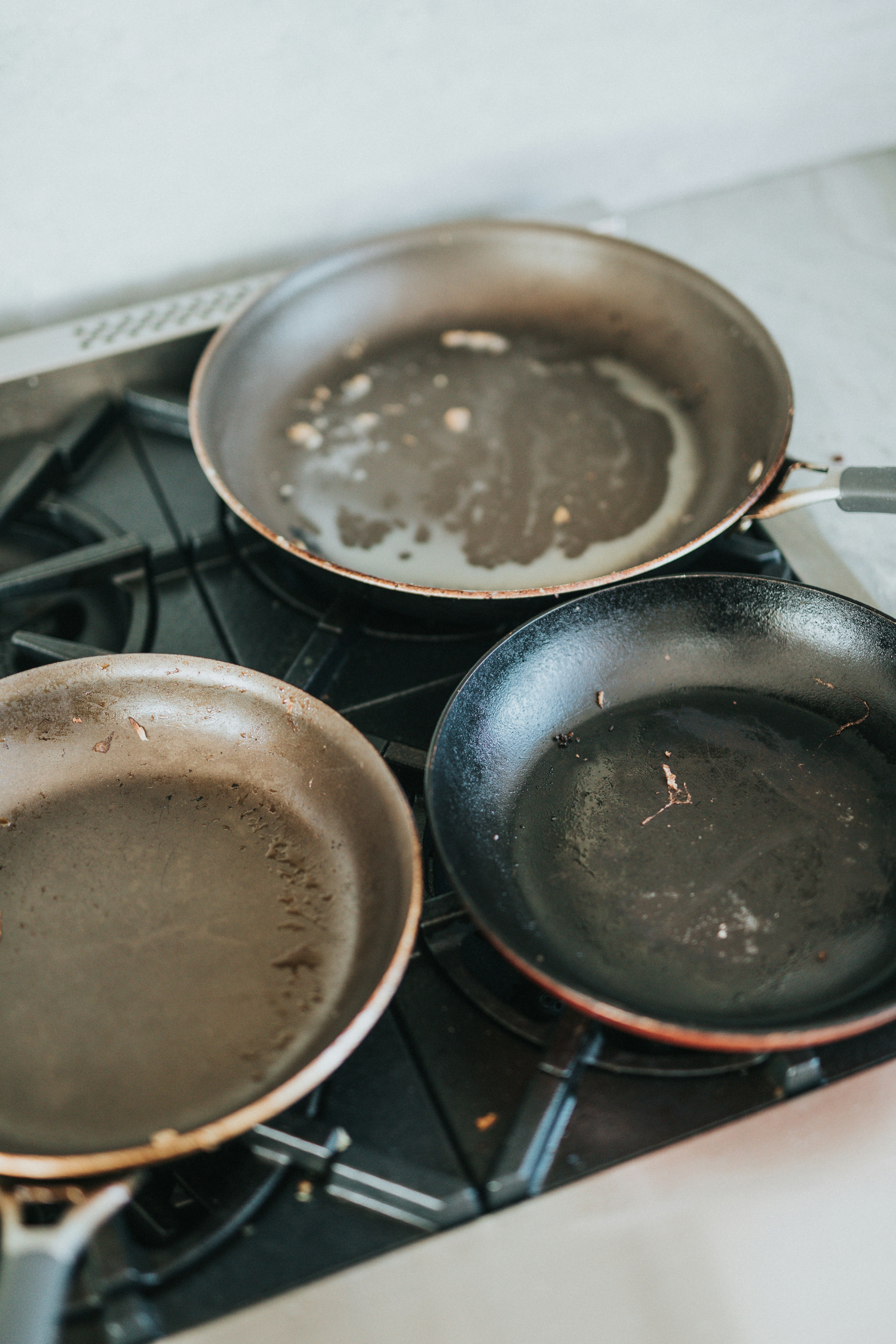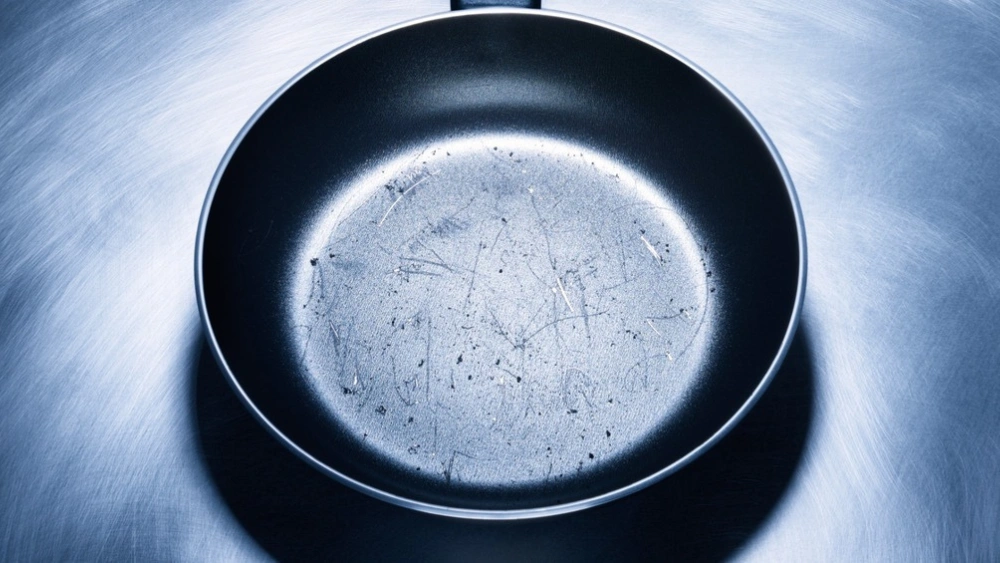Have you noticed your food sticking to your non-stick pan lately? Or maybe the surface looks scratched and worn out?
These are clear signs that your pan’s coating is wearing off. Using a damaged non-stick pan can affect your cooking and even your health. You’ll learn how to spot the early warning signs that your pan needs replacing. Keep reading to protect your meals and get the best results every time you cook.

Credit: www.reddit.com
Loss Of Non-stick Performance
Noticing a decline in your pan’s non-stick performance can be frustrating, especially when cooking your favorite meals. The smooth, effortless glide of food should be a given with non-stick cookware. If you find yourself battling with food sticking or scrubbing harder than usual, it’s a clear sign your pan’s coating is losing its magic.
Food Sticking More Often
One of the first signs that your non-stick coating is wearing off is food sticking more frequently. You might notice eggs, pancakes, or even delicate fish refusing to slide off smoothly. This happens because the protective layer that prevents adhesion is thinning or damaged.
Have you experienced flipping pancakes and watching half of them stay stuck to the pan? That’s a strong hint that your pan’s non-stick surface isn’t working like it used to. Continuing to use a pan like this can lead to uneven cooking and frustration at every meal.
Difficulty In Cleaning
Cleaning your pan should be quick and hassle-free. When the non-stick coating wears down, food residues cling stubbornly, making cleanup a chore. You might find yourself scrubbing harder or soaking the pan longer than before.
This extra effort can be a warning sign that it’s time to replace your pan. If soap and water no longer do the trick, and you’re relying on abrasive tools, your pan’s surface is likely compromised. Ask yourself: is it worth the effort when a new pan can save you time and energy?
Visible Damage To Coating
Visible damage to your non-stick pan’s coating is one of the clearest signs that it’s time for a replacement. Over time, daily use and cleaning can cause wear that isn’t just cosmetic—it directly affects your pan’s performance and safety. Noticing these changes early can save you from cooking frustrations and potential health risks.
Scratches And Peeling
Scratches on the non-stick surface often start small but can quickly spread, compromising the coating’s integrity. If you see flakes or small pieces peeling off, it means the coating is deteriorating and could contaminate your food.
Using metal utensils or abrasive cleaning pads accelerates this damage. Have you checked your pan for these signs lately? If you spot peeling, it’s a clear signal to stop using the pan immediately.
Discoloration And Fading
Discoloration or fading of the non-stick surface shows the coating is breaking down due to heat and chemical exposure. A pan that once had a smooth, dark finish may look dull or patchy now.
This change isn’t just about appearance; it often means the coating has lost its non-stick properties. If your food starts sticking where it didn’t before, faded coating could be the reason behind it.
Health And Safety Concerns
Non-stick pans make cooking easier and cleanup faster. Yet, their worn coatings can pose risks to health and safety. Recognizing these risks helps protect you and your family from harm.
Release Of Toxic Chemicals
Damaged non-stick coatings may release harmful chemicals when heated. These substances can enter your food or the air. Breathing in fumes from overheated pans may cause flu-like symptoms. Long-term exposure could affect your lungs and overall health. Avoid using pans with chipped or peeling surfaces to reduce this risk.
Warped Or Damaged Pan Surface
A warped or scratched pan does not heat evenly. Hot spots can burn food and damage the coating further. Uneven cooking may also lead to undercooked meals, which can cause foodborne illness. Physical damage to the pan can increase the chance of coating flakes mixing with your food. Replace pans that show warping or deep scratches to maintain safe cooking conditions.

Credit: www.facebook.com
Changes In Cooking Experience
Changes in your cooking experience often signal that your non-stick pan coating is wearing off. These shifts can affect the quality and ease of cooking. Paying attention to these signs helps you decide when to replace your pan. Cooking becomes less efficient and more frustrating as the coating degrades.
Uneven Heating
One common sign is uneven heating across the pan surface. Food may cook faster in some spots and slower in others. This happens because the coating no longer distributes heat evenly. You might notice burnt edges while the center remains undercooked. Uneven heating can ruin your meals and waste ingredients.
Increased Oil Usage
A worn coating loses its non-stick properties, causing food to stick more easily. You might find yourself adding more oil or butter to prevent sticking. This extra oil changes the taste and texture of your dishes. It also increases calories and reduces the health benefits of cooking. Using more oil is a clear sign your pan needs replacement.
When To Replace Your Pan
Knowing when to replace your non-stick pan can save you from unhealthy cooking and ruined meals. Over time, the coating wears down and loses its effectiveness. Recognizing the right moment to swap your pan ensures you keep cooking safe and enjoyable.
Assessing Wear And Tear
Start by examining the surface closely. Scratches, peeling, or flaking are clear signs the coating is damaged. If your food starts sticking more than usual, it’s a red flag.
Also, check for discoloration or patches where the non-stick layer looks uneven. These spots can cause uneven heating and ruin your dishes. Ask yourself: does your pan still glide smoothly when cooking, or has it become sticky and difficult to clean?
Small nicks can sometimes be fixed by seasoning the pan, but deep scratches or peeling mean it’s time to replace. Remember, cooking with a damaged non-stick pan may release harmful chemicals.
Choosing A New Non-stick Pan
When picking a new pan, consider how you cook daily. Do you often prepare delicate eggs, or do you need something durable for high-heat searing?
- Material:Look for pans with ceramic or hard-anodized coatings for better durability.
- Size and weight:Choose a pan that feels comfortable to handle and fits your cooking space.
- Brand reputation:Research brands known for safe, long-lasting coatings.
Think about your cleaning routine too. Some pans are dishwasher-safe, but hand washing often extends their life. Have you ever bought a pan that didn’t meet your expectations? Use that experience to guide your choice this time.

Credit: medium.com
Frequently Asked Questions
How Can I Tell If My Non-stick Pan Is Worn?
Check for visible scratches or peeling on the surface. Food sticking or uneven cooking can also indicate wear. If the coating is flaking, it’s time to replace the pan. These signs suggest that the non-stick properties are diminishing and pose potential health risks.
Is It Harmful To Use A Worn Non-stick Pan?
Using a worn non-stick pan can release harmful chemicals into food. These chemicals may pose health risks if ingested. A damaged coating may also affect cooking quality. It’s best to replace the pan once you notice wear to ensure safe and healthy cooking.
What Causes Non-stick Coating To Wear Off?
Frequent use, high temperatures, and improper cleaning can cause non-stick coating to wear off. Using metal utensils can also scratch the surface. Over time, the coating weakens, reducing its effectiveness and safety. Proper care can extend the life of your non-stick cookware.
How Often Should I Replace Non-stick Pans?
Replace non-stick pans every 3-5 years, depending on usage and care. Frequent use may require earlier replacement. Inspect your pans regularly for signs of wear. Proper maintenance can prolong their life, but replacing them ensures safe and efficient cooking.
Conclusion
A worn non-stick pan can ruin your cooking experience. Scratches, peeling, and uneven surfaces show signs of wear. These issues affect food quality and may release harmful chemicals. Replace your pan once you spot these problems. Using a good, intact pan keeps cooking safe and easy.
Pay attention to your cookware to enjoy better meals every day. Don’t wait until damage gets worse—act early for best results. Your kitchen and health will thank you.

